Sept. 3 update on COVID-19 in MN: 'Not out of the woods'
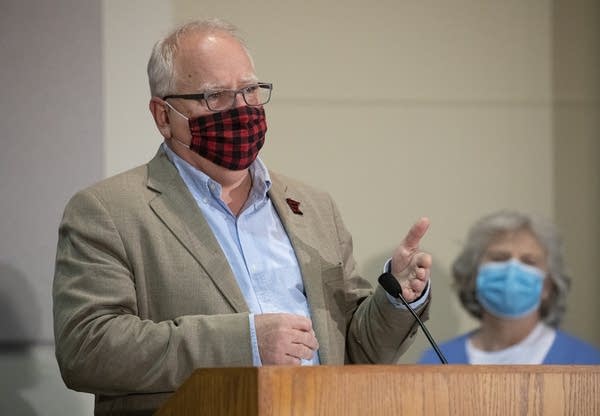
Updated: 5:20 p.m
Gov. Tim Walz on Thursday warned that Minnesota sits at a “tipping point” in the COVID-19 pandemic, putting the state’s gains at risk as new cases skyrocket. He implored Minnesotans to stay vigilant to stem the spread of the disease over Labor Day weekend and beyond.
Steep climbs in new cases have led health authorities to sound the alarm in recent weeks that the state is on the wrong path as fall turns to winter and that Minnesotans must do more to stem the spread, including wearing masks and socially distancing even at casual meetups with friends and family.
Walz joined that chorus Thursday, telling reporters the state may be headed down a road of uncontrolled spread and end up like Arizona.
“We are not out of the woods,” Walz cautioned, noting that weddings, informal get-togethers, barbecues and extend friends and family gatherings are fueling the current caseload.
Create a More Connected Minnesota
MPR News is your trusted resource for the news you need. With your support, MPR News brings accessible, courageous journalism and authentic conversation to everyone - free of paywalls and barriers. Your gift makes a difference.
White House coronavirus response coordinator Dr. Deborah Birx visited Minnesota Sunday and told officials here she was especially concerned about the levels of community spread moving through Minnesota, infections with no specifically identified origin.
“Many of the same flashing lights we’re seeing look like Arizona,” Walz said Birx told him.
State Health Commissioner Jan Malcolm and Kris Ehresmann, the state’s infectious disease director, have been sharpening their messages of personal responsibility for weeks. In their remarks, they’ve expressed rising frustration that too many Minnesotans are acting like the pandemic is over when it is not.
Ehresmann on Thursday said Health Department analysts know of a wedding in southwestern Minnesota with 275 guests, far higher than state guidance allows. There are now 56 cases associated with the wedding, scattered over nine counties, she added.
Investigators are also following up on a cluster of illnesses at a wedding that was attended by someone who’d also gone to the massive Sturgis, S.D., motorcycle rally, Ehresmann said.
The Aug. 7-16 rally drew some 460,000 people from across the country. Most people didn't take significant precautions against COVID-19 infections.
Officials here have already confirmed 50 direct cases in Minnesota tied to Sturgis, with one death.
"During a pandemic, one person's actions and decisions don't just affect themselves. They affect those around them, at work, at home and everywhere they go," Ehresmann added. "The bottom line is none of us is an island."
Hospitalizations, new deaths flatten; cases jump
Walz’s remarks came as the latest Minnesota COVID-19 numbers continued to offer equal parts hope and worry.
Thursday’s data showed a significant drop in the number of people currently hospitalized, and deaths remained in the single digits. The state, however, logged another 1,047 newly confirmed cases.
Over the past week, Minnesota’s seen its number of active, confirmed cases reach a record high.
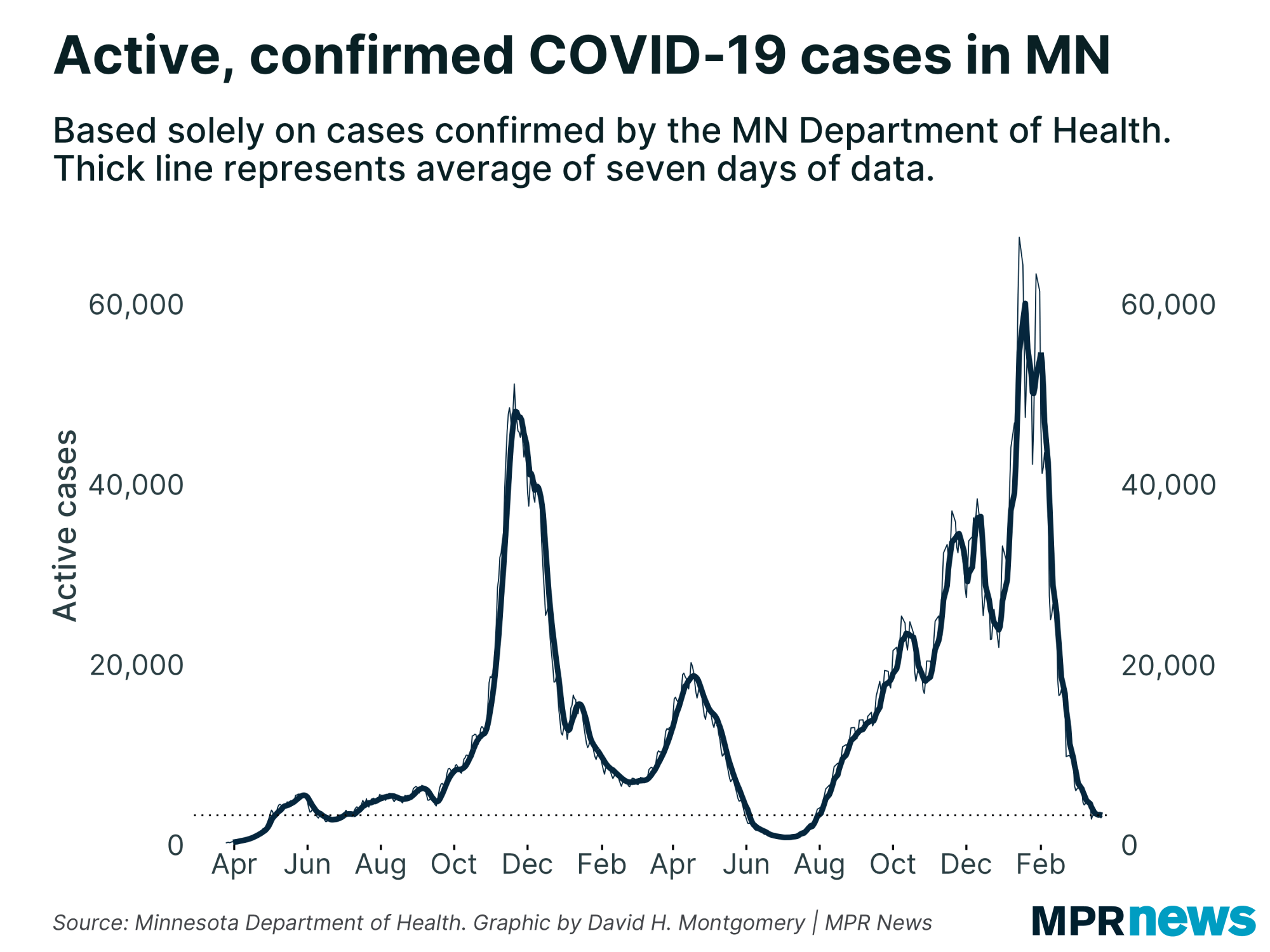
The recent surge hasn’t translated to an increase in hospitalizations. It’s been largely driven by 20-somethings, who are generally less likely to suffer symptoms severe enough to require hospitalization.
Officials, though, believe the waves of news cases will eventually push the hospitalization numbers higher.
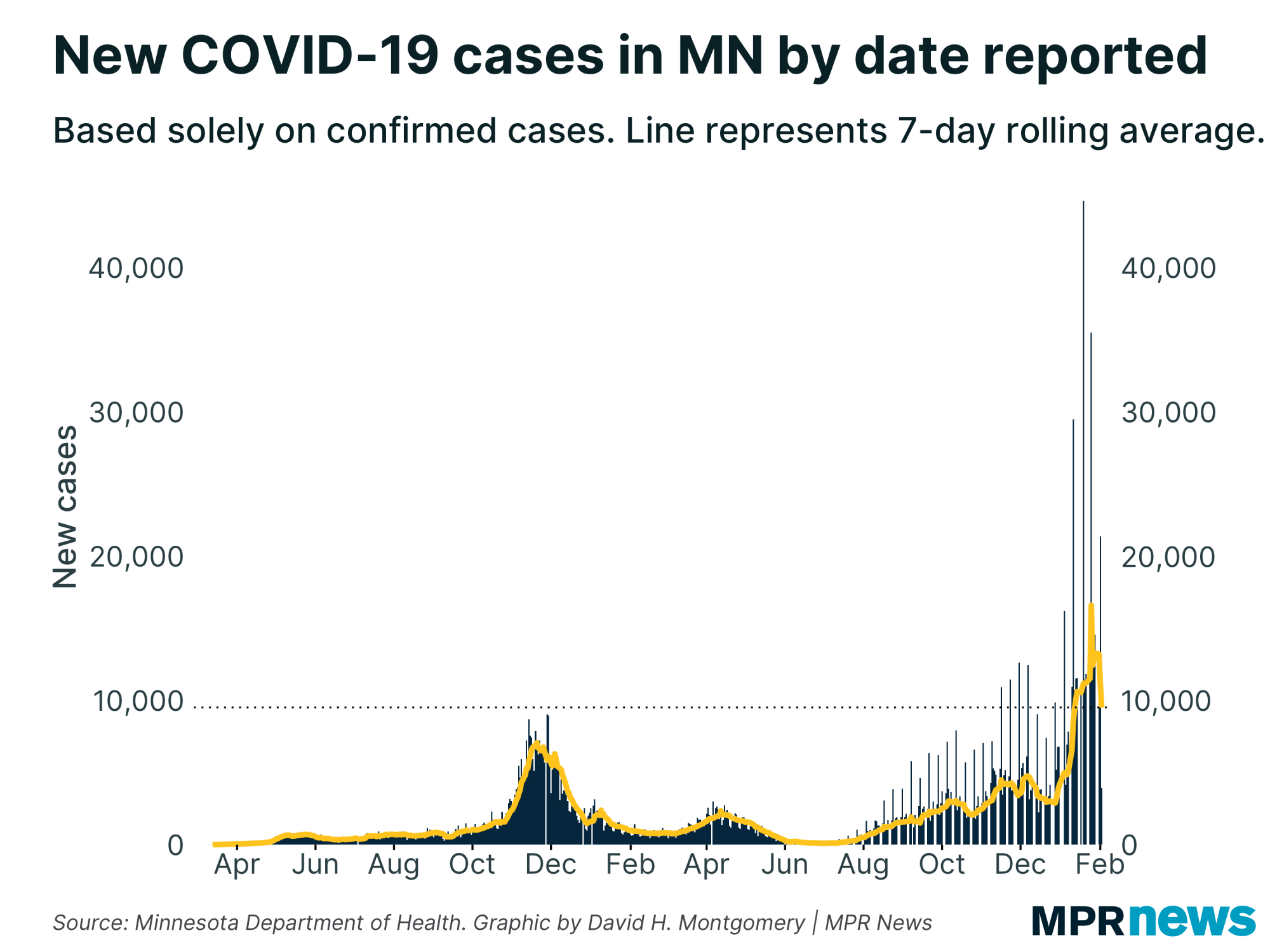
The count of people currently hospitalized (272) fell from Wednesday, trending down from August when there were consistently 300 or more patients in the hospital daily on average. However, the count of those needing intensive care (138) rose slightly from Wednesday.
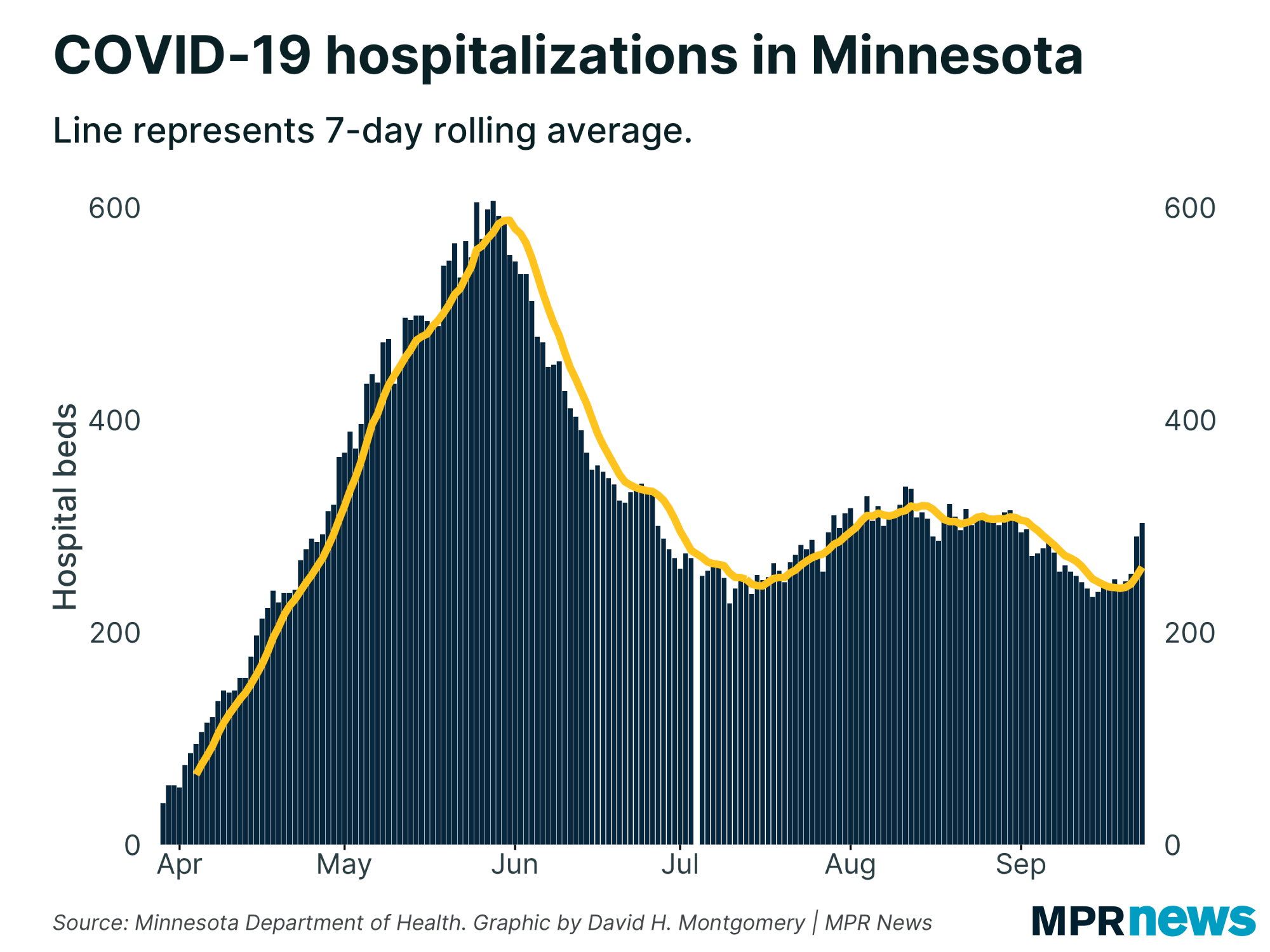
Of the 78,123 confirmed cases of the disease in the pandemic, about 90 percent of those identified have recovered to the point they no longer need to be isolated.
Seven additional deaths reported Thursday brought Minnesota’s total in the pandemic to 1,837. Among those who’ve died, about 73 percent had been living in long-term care or assisted living facilities; nearly all had underlying health problems.

Suburbs, southern MN drive new cases
Regionally, the Twin Cities and suburbs had been driving the counts of newly reported cases. This week’s data, however, show new cases exploding everywhere except Hennepin and Ramsey counties.
Thursday’s numbers showed cases climbing in southern and central Minnesota.
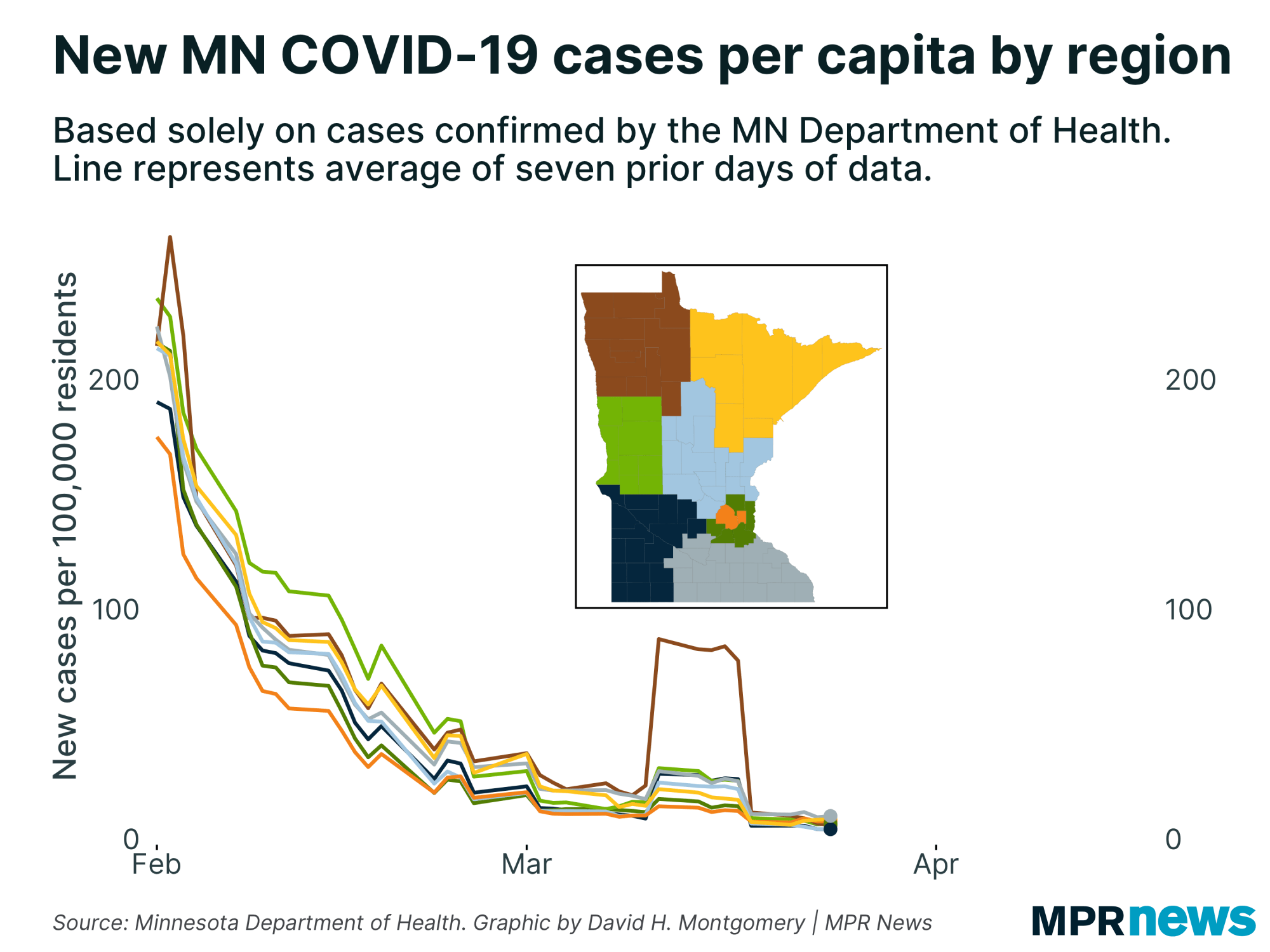
Northern Minnesota cases resumed their climb after jumping in July and then retreating. Beltrami County, home to Bemidji, has seen a steady climb the past few weeks. The county reported 329 cases and one death as of Thursday.
Meatpacking operations had been hot spots for big outbreaks in southwest, west-central and central Minnesota earlier in the pandemic.

New cases had slowed considerably, although the problem has resurfaced recently in McLeod County (370 cases), where more than 20 employees at a Seneca Foods plant in Glencoe were identified recently in an outbreak.
Le Sueur and Waseca counties are also seeing big, recent case increases. Le Sueur showed 399 cases and two deaths as of Thursday.
‘Weak spot in our response’
With newly confirmed cases rising steeply the past few weeks and college students and kids returning to school, officials are increasingly concerned Minnesotans have numbed to the need to stay vigilant, opening the door to more spread.
Young adults are a particular concern.
People in their 20s make up the age bracket with the state’s largest number of confirmed cases — more than 18,000 since the pandemic began, including more than 10,000 among people ages 20-24.
The number of high school-age children is also growing, topping 7,000 cases for students 15 to 19 years old.
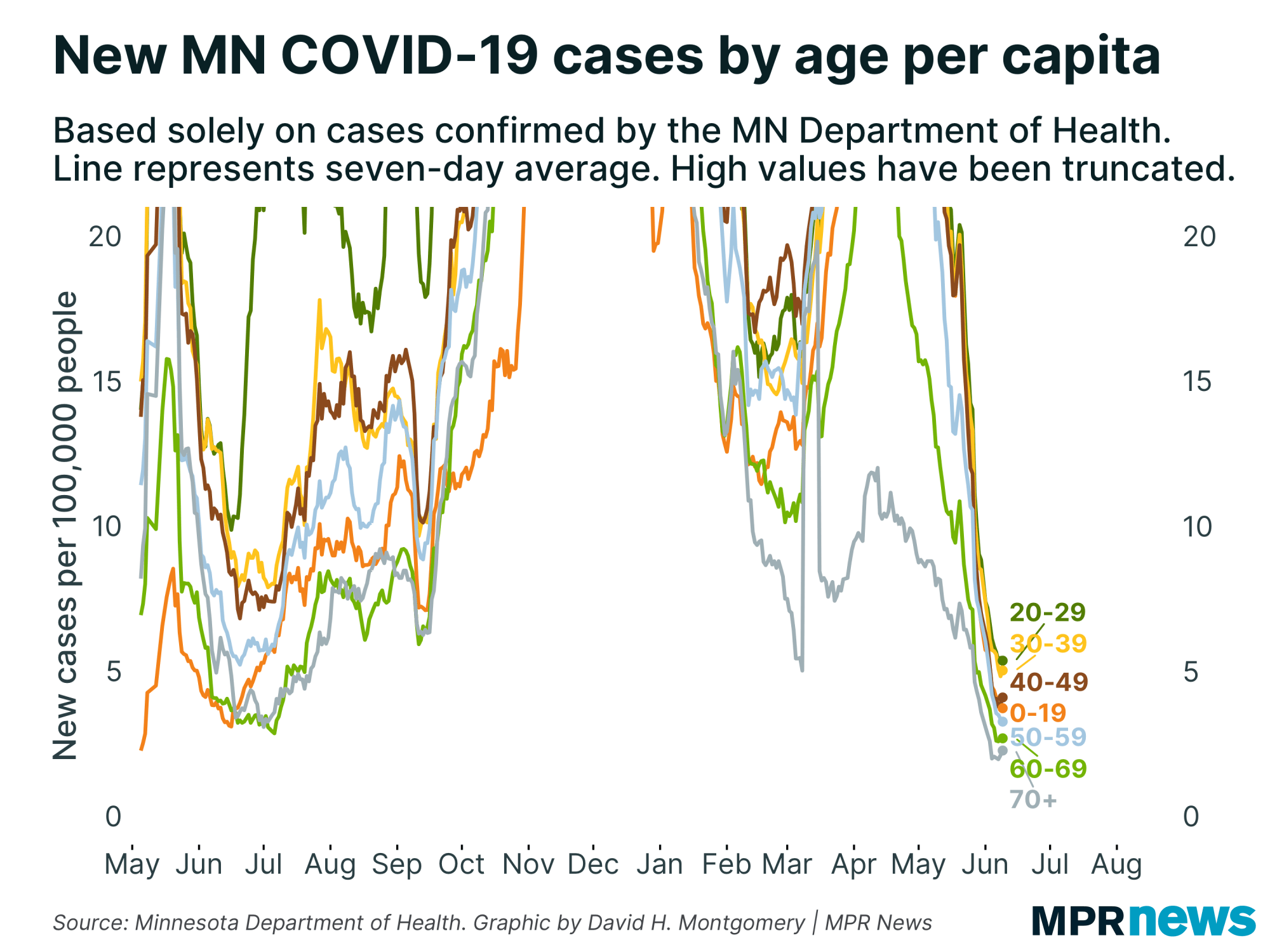
While less likely to feel the worst effects of the disease, experts worry youth and young adults will spread it to grandparents and other vulnerable populations and that such outbreaks could cripple attempts to reopen campuses completely to in-person teaching.
Earlier this week, health authorities noted a spike in Winona County they attribute to college-age people returning to schools there. Winona State University and St. Mary's University are based in Winona. The city also has a Minnesota State College Southeast campus.
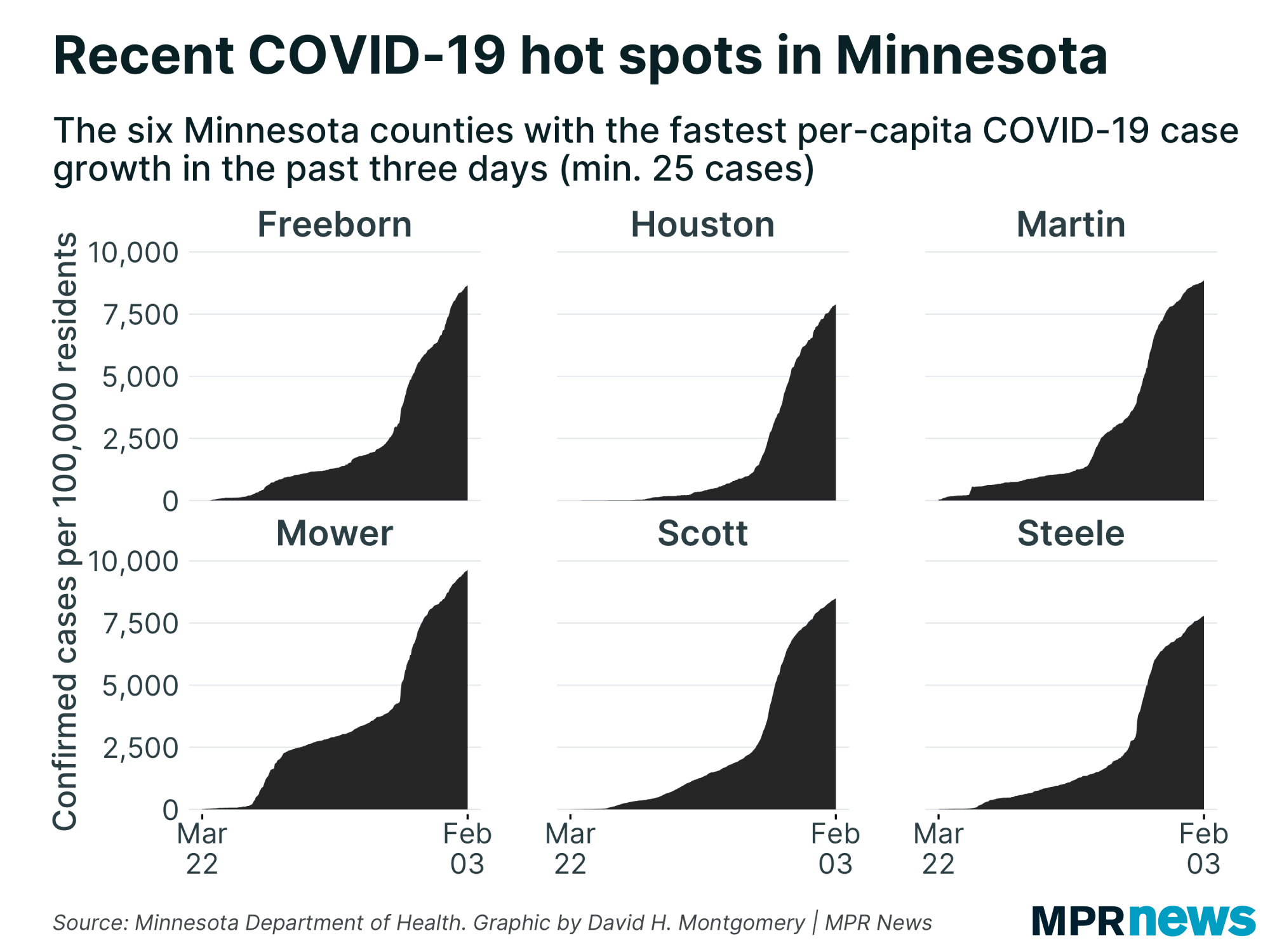
Minnesotans’ behavior in stores, restaurants and other public places isn’t so much the problem now, but “informal gatherings have really proven to be a weak spot in our response to the pandemic,” Malcolm said this week.
She reiterated that Thursday, noting that case surges early on in the pandemic could be easily traced to meatpacking plants and other easily identified points of origin, but that’s not the case in the current surge.
About one-third of new cases now are now coming from community spread of unknown origin, higher than just before the last major holiday that brought Minnesotans together, the Fourth of July.
“We’re in a more precarious situation today” compared to then, Malcolm said. “There is risk in this situation. The virus is all over the state. The outbreaks are happening all over the state … and we just want people to be vigilant.”
Developments around the state
Walz, Gazelka chat over COVID-19, emergency powers
DFL Gov. Tim Walz and Republican Senate Majority Leader Paul Gazelka held a private meeting Thursday to try to iron out their differences over the state’s COVID-19 response.
Walz is expected to seek another extension of the emergency, even though Gazelka and other Republicans say it's gone on too long.
“It’s going to be almost a half a year, a half a year of emergency powers with no end in sight. So, that‘s why we’re asking him to come up some parameters so we know what is the pathway out of here,” Gazelka said. “So that the legislative branch can work together with the governor, rather than the governor having all of the decision making.”
Still, Gazelka believes they can find common ground moving forward to help businesses and schools.
“I think we should take it seriously. But at the same time, we have to measure all these businesses closing, kids not in school. What are we going to do about those issues as well?”
Both Gazelka and Walz said the meeting was positive. But Walz stressed that the emergency is not over.
“We’re learning a lot of COVID-19. The one thing is it does not follow our timeline,” Walz said.
— Tim Pugmire, MPR News
Saliva tests coming for K-12 teachers, day care staff who want one
Earlier in the pandemic Minnesota officials vowed to make sure any K-12 teacher or day care provider would have access to one free COVID-19 test. On Wednesday, Malcolm said those teachers and staffers would soon receive instructions on how to access those tests.
Schools and school staff will be receiving instructions this week on how to get a unique code to access a saliva test. The code can be used to access a single test through the end of the year, Malcolm said.
She emphasized that teachers and staff are not required to take a test before returning to classrooms or continuing in child care, but urged those eligible to use the option if needed.
“Maybe you’re feeling symptomatic. Maybe you were exposed to someone who tested positive for COVID,” she added.
— MPR News Staff
MN History Center to reopen after monthslong pandemic closure
After being closed for months amid the pandemic, the Minnesota History Center in St. Paul will reopen to the public on Oct. 1.
The center will limit the number of visitors and advance tickets are recommended. Special exhibits on Prince and First Avenue have been extended through Jan. 3.
The Minnesota Historical Society, which runs the center, says it's ready to also resume self-guided tours of the State Capitol as soon as the Department of Administration reopens the building. The historical society added that its Mille Lacs Indian Museum trading post in Onamia, Minn., will also reopen on Oct. 1. The museum itself will remain closed this year.
The center's research library is still being reconfigured to safely host visitors during the pandemic. It's set to reopen later this year.
— Andrew Krueger | MPR News
HealthPartners to take part in Oxford’s COVID-19 vaccine trial
HealthPartners Wednesday announced that it will be enrolling at least 1,500 people in a clinical trial that will determine whether a vaccine developed by Oxford University is effective at preventing COVID-19.
Participants must be 18 or older, in good health, and not have had COVID-19 already. Researchers are particularly interested in people who have a high risk of contracting COVID-19, such as health care workers, first responders, and food service, grocery store and meat-packing workers.
They’re also looking for people who have stable health conditions like diabetes and high blood pressure that make them more likely to develop severe forms of COVID-19. They’re also looking for people of color to participate.
The trial is a randomized double-blind study. About two-thirds of enrollees will receive the vaccine, while one-third will receive a placebo. Medical experts say there are initial signs the vaccine is working and safe, and hasn’t shown serious side effects among people who got the injection.
Researchers from the HealthPartners Institute will oversee the trial enrollment in partnership with physicians from across the organization’s care system. HealthPartners is the only health system in Minnesota and one of about 100 sites in the United States, Peru and Chile involved in the clinical trial, led by AstraZeneca.
“This research compliments our other efforts to advance COVID-19 testing, treatment and care and is an important part of our mission to improve health and well-being,” said Andrea Walsh, HealthPartners president and CEO.
Although the effort has been the subject of political criticism in the run-up to the presidential election, HealthPartners researcher Charlene McEvoy said the trial is focused on science.
“The American people’s health, the world, is depending on us doing this right. This should not be political,” McEvoy said.
The trial is expected to run for two years, but approval of widespread use may come sooner.
— Tim Nelson | MPR News
Surly Brewing closing its beer hall indefinitely
Calling it a "gut-wreching decision," Surly Brewing Co. announced Wednesday that it will close its beer hall in November. The Minneapolis brewery said in a statement on its website that "beer halls are, by definition, gathering places, and gathering places and pandemics don't mix."
The company says revenue from the space is down 82 percent from the same period last year.
The closure comes just days after workers at the brew hall voted to unionize. In a post on its Facebook page, the union said the move is illegal and clear retaliation for workers forming a union. Company owners say the plans to close the beer hall were put in place weeks ago.
Surly is credited for helping launch the craft-beer boom in Minnesota. It opened its destination beer hall in 2014.
— Peter Cox | MPR News
Top headlines
Minnesota Supreme Court expected to expedite voter-aid case: Justices will decide if a pair of laws covering the level of assistance permitted for voters will remain active or be suspended. A lower court halted enforcement. The case is one in a sprawling battle over the way the 2020 election will be conducted.
COVID-19 looms over sugarbeet harvest: Sugarbeet growers and processors hire thousands of workers each year of the harvest. This year they need to protect them from COVID-19 to ensure the harvest is brought in.
At least 12 states report coronavirus cases linked to Sturgis rally: More than two weeks after nearly half a million bikers flocked to South Dakota, the tally of coronavirus infections traced back to the Sturgis Motorcycle Rally has surpassed 260, an estimate that is growing steadily as more states report cases, with the first known COVID-19 death of an attendee reported in Minnesota.\
COVID-19 in Minnesota
Data in these graphs are based on the Minnesota Department of Health's cumulative totals released at 11 a.m. daily. You can find more detailed statistics on COVID-19 at the Health Department website.